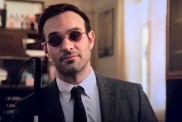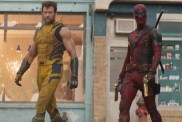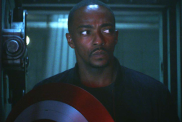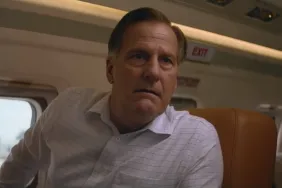I remember back in school how annoyed I would get with my English teachers as we dissected every word in the books we were assigned to read. It seemed not a sentence would go by that didn’t hold some larger meaning. I’d be thinking, “Not every word has to have some deeper meaning. Can’t an author simply be telling a story?”
When it comes to films, I think a larger case can be made for looking deeper into things given they are working under tighter constraints than most books, but at the same time I can’t tell you how many interviews I’ve read where directors have been asked the “What did you mean by X? And was there anything to Y?” and the answer comes back, “Nothing really, just thought it worked for the story.”
In fact, I had a similar situation recently when discussing The Perks of Being a Wallflower with writer/director Steven Chbosky. The film, set in the 1990s, features a group of friends played by Logan Lerman, Emma Watson and Ezra Miller. All three love music and the passing back-and-forth of mix tapes becomes a “thing”. One day they’re driving around and David Bowie’s “Heroes” comes on the radio and not one of them knows the name of the song or the artist. It’s rather unfathomable, especially considering all the names these three drop when mentioning their favorite artists. So there has to be a deeper meaning… right?
Well I asked Chbosky what the deal was even coming up with the idea it was a metaphor to the extent this group of seeming outcasts simply didn’t realize they were heroes and only realize it later on, once they figure out who sings the song and its title. Nope, not the case. As Chbosky told me:
I can tell you honestly, this is semi-autobiographical. Early ’90s, Bowie, to me, was the “Let’s Dance” guy and I did not know the song “Changes” and I did not know the song “Heroes”. “Heroes” came later to me. My sister loved the song, and she asked me that same question.
I went back and forth with [producers] Russ Smith and John Malkovich about this because they were like, “Dude, how do they not know this song?”
I go, “Look, you can say that it’s not realistic and I will take the criticism. I’m telling you, this is based on my life partly, I didn’t know the song in ’92. So I don’t know what to tell you.”
So while we look for deeper meaning it may not always be there. But does that mean we shouldn’t be looking?

I actually started to think about this a lot recently as I wrote about The Master and Scientology (read that here).
I thought about it even more after watching Jean Vigo‘s A propos de Nice and finally after reading the Film Doctor’s “10 Notes on Looper“, which caught my attention when I got to #6 on his list:
6) Take the off-repeated fundamental scene of the movie. Looper Joe Simmons stands out in a field with his blunderbuss (a big gun) and waits by a tarp. Abruptly, a hooded man (and it is always a man) from the future appears on the tarp kneeling, whereupon Joe shoots him, and then rapidly disposes of the body in an incinerator. One can analyze this blunt scene as:
a) a cynical reflection of American foreign policy, especially in the way the man’s hood is reminiscent of the atrocities of Abu Ghraib.
b) the final debasement of the iconic Hollywood cowboy and/or the hitman, with no need to aim, no flair, no razzle-dazzle gunplay. Joe might as well be in a slaughterhouse. The monotony of Joe’s killing makes it so evocative, its everyday dreariness.
c) a variation on Nazi concentration camp techniques, with the incinerator substituted for the ovens.
d) a reminder of how future technological advances in surveillance and identification will make it nearly impossible to dispose of bodies, hence the need to send the victims back in time.
I found it interesting because I didn’t clue in to any of that (and looking at the image above am sort of ashamed I didn’t, at the very least, find some greater meaning). In fact, I was particularly keyed in on writer/director Rian Johnson‘s use of violence in those scenes writing the following in my review:
Johnson doesn’t hold back when it comes to the film’s violence and it works on two levels. The first is the overall raw intensity it brings to the picture. The sound mix is sure to let the audience know a bullet has been fired and the visual splatter of blood and gore isn’t limited. However, this also serves to desensitize the audience for what is to come, a story about our world’s youth — the corruption, bloodshed, what it all leads to and the way it will shape our future leaders. As an audience looking to be entertained, we revel in the action on screen, but there also comes a point where you realize such matters can have dramatic, real world consequences.
Johnson explored this specifically in an interview with the New York Times where he says, “‘Does solving a problem by finding the right person and killing them ever work? Or does it create a self-perpetuating loop of violence?’ And that to me is not a theoretical, time-travel question. That’s a real-world question.”









